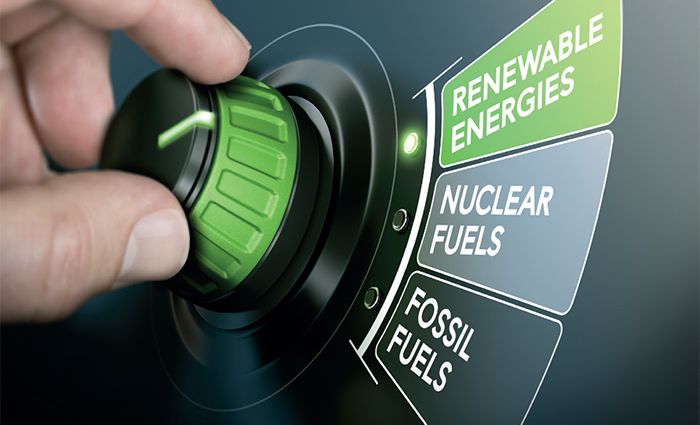
Revisiting our renewable strategy is a must By Stuart Murphy
2022 shone a spotlight on the fragility of the European energy market and raised important questions about our overreliance on gas. Currently, fossil fuels are an integral part of our energy mix, natural gas primarily, and we need them to provide consistent Base Load power (the minimum amount of electricity required to keep the lights on).
We are drowning in a worldwide energy crisis and it’s largely because we can’t stop using fossil fuels. Unfortunately, unless you have a Base Load renewable energy system, you will never get rid of fossil fuel, no matter what anybody tells you. Simply put: it’s impossible.
However, it’s not too late. 2023 presents a fresh opportunity to recalculate our energy strategy to fill in the infrastructural gaps currently being pumped full of gas. We must get over our fossil fuel addiction if we are to stand a chance at meeting net-zero goals and providing our planet with much-needed relief from global warming.
The current renewables market
Until we take a long hard look at our current energy mix and find a way to diversify our strategy, global warming isn’t going anywhere. Renewables made up around 36 percent of our electricity generation in Q3 of 2022, mainly wind and solar energy. With a wind capacity of over 20 GW and 5 GW for solar, you would think we are on track to meet 2035 net-zero targets… sadly, you’d be sorely mistaken.
Our renewables strategy focuses on intermittent wind and solar energy, but no matter how great our generation capacity, we are still completely dependent on the weather. Only recently we saw a ‘wind drought’ from November 27th to December 18th 2022. During this time, gas and coal were running at maximum, peaking at 25 GW on the coldest days.
In terms of support from nuclear capacity, there was no forward planning whatsoever, as output was just 3.9 GW on November 27th and took 18 days to reach its peak of 5.9 GW during one of the coldest spells of the year, where we also had to rely on five-to-seven GW of imported power to prevent power outages.
These droughts are a troubling indication of an emerging global phenomenon known as ‘Global Stilling’, which is causing wind-related power in Europe to be unpredictable, and we are starting to lean on gas and coal to fill the Base Load gaps.
 Our strategy moving forward
Our strategy moving forward
So, what plans have we seen to improve the situation? In short, very few. The UK Chancellor’s 2022 autumn budget announcement highlighted our commitment to carbon capture technology, nuclear and offshore wind. We’ve also previously seen proposals to increase offshore wind capacity to 40GW by 2030 and expand solar capacity. Similarly, the government intends to more than triple our nuclear capacity over the next three decades.
This is all very well, but the intermittency issue remains. Fundamentally, nuclear can’t be adjusted around wind and solar, so to provide Base Load power you’d need a far greater number of new plants than the government is promising. Nuclear is also very expensive, slow to build and accompanied by all sorts of environmental issues concerning waste disposal. As for carbon capture, instead of shoveling money into catching carbon, why not stop producing it in the first place?
The UK conservative Government aims to decarbonize the energy industry by 2035, but we are yet to see a credible plan of action to achieve this.
Interestingly, there have been trickling signs of ambitions to revive onshore wind, which since 2015 has been faced with challenging consent processes. As it stands, only 11 percent of local authorities across England have areas designated for renewable developments. If our government removes stringent building requirements for onshore wind, we could see a boost in renewable capacity, but it’s still intermittent. Ultimately, it doesn’t solve the clean Base Load conundrum.
Demand for more efficient solutions
To date, our government has not been able to deliver a scalable renewable energy strategy to achieve its goals. We are still naively banging the same wind and solar drum, expecting a different result – the very definition of insanity. We continue to rely on liquefied natural gas imports to meet energy demands while we boast about our (unreliable) wind power capacity. We must take a broader look at other renewables to help fill the gaps left by gas if we are to phase out fossil fuels.
Other budding initiatives like hydrogen and tidal power have seen significant improvements in recent years, paving the way for another path to Net Zero 2035. Recently, we’ve even seen advances in nuclear fusion power. I want to make clear that I’m not knocking wind, solar and nuclear, but the fact is that we need to invest in as many solutions as possible to stand the best chance at tackling climate change before the situation gets completely out of hand.
Wind and solar are at a point where they are relatively inexpensive to scale and are currently our go-to solutions however we are running out of time and need to take other options seriously.
Tidal range energy, in particular, has shown promise, although this potential Base Load renewable isn’t being talked about by governments today. It is so far behind wind and solar in terms of funding, and it’s about time this changed. As a consistent force of perpetually available energy it’s a no brainer and needs to be harnessed without delay.
No silver bullet
Of course, there is no one-size-fits-all solution to the ongoing energy crisis, and we certainly aren’t going to beat climate change overnight. Time is short, but if we take other renewables like tidal energy more seriously and have the tenacity to invest now, before it is too late, we might just stand a chance at hitting our ambitious net-zero targets.
We are passing up a huge chance with a Base Load renewable like tidal on our doorstep, and cannot afford to keep putting all our eggs in the wind, solar, nuclear baskets. We must continue to raise awareness of alternative energy sources and encourage investments in our future, today. There is no time to waste, and everything is at stake.
For a list of the sources used in this article, please contact the editor.
Stuart Murphy
www.tidalpower24.com
Stuart Murphy is Inventor and founder, TPGen24. TPGen24 is the next leap forward in renewable energy as the first system to generate green Base Load electricity 24/7, 365 days a year using the power of our planet’s tidal ranges. It is a refreshingly simple, turbine-loaded, lagoon system with small-impact, low-maintenance and high-yield renewable power plant which can perpetually produce green energy for centuries to come.